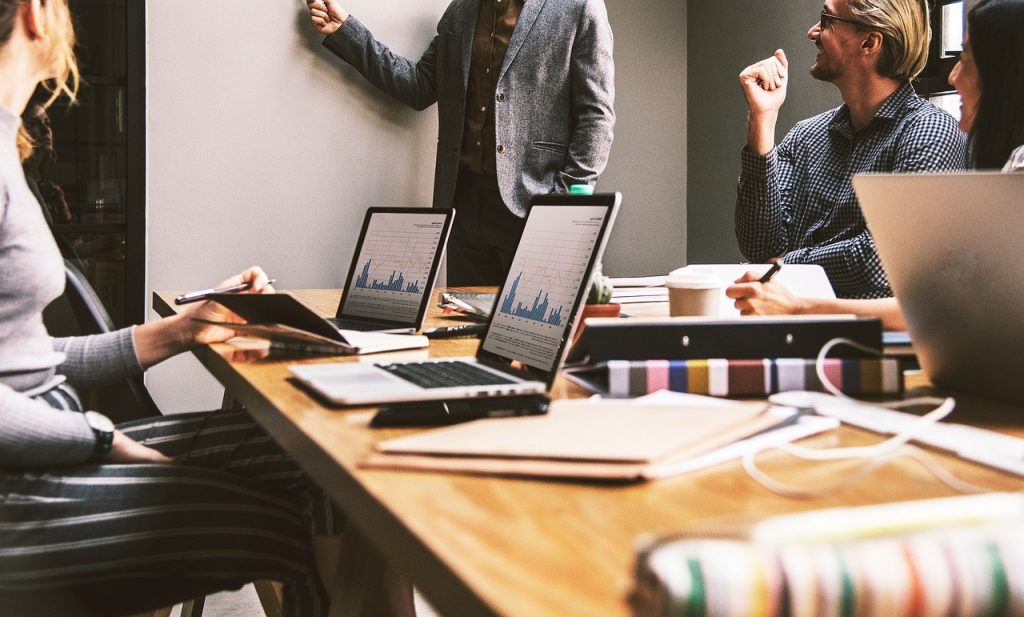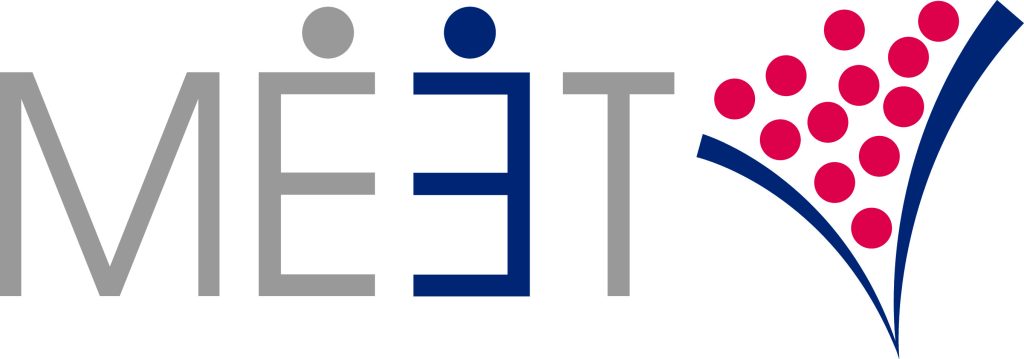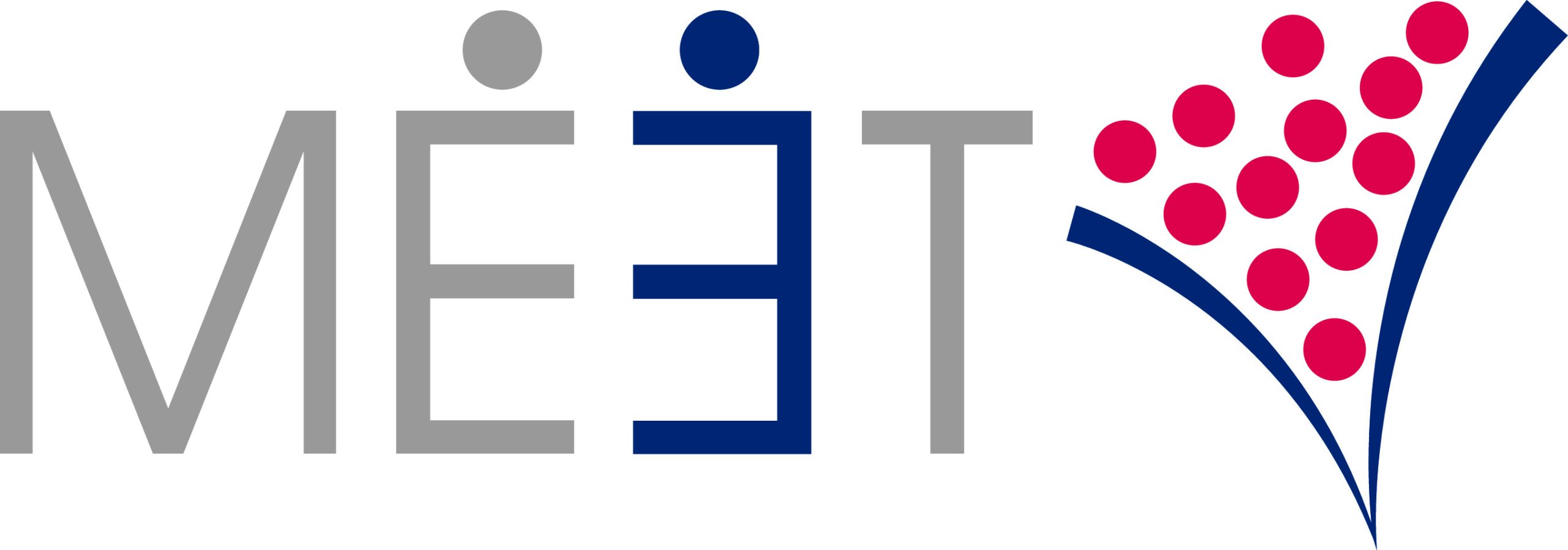Creating a productive meeting space in a B2B trade show booth is essential for fostering meaningful interactions, building relationships, and ultimately driving business deals. A well-designed meeting space can facilitate focused conversations and make attendees feel comfortable and valued. Here’s a comprehensive guide on how to create a productive meeting space for your B2B trade show booth:

1. Design and Layout
- Dedicated Meeting Area: Designate a specific area within your booth for meetings. This helps separate casual visitors from serious prospects, ensuring a focused environment.
- Private or Semi-Private Spaces: Depending on the nature of your business and the sensitivity of discussions, consider creating private or semi-private meeting spaces. Use partitions, curtains, or enclosed pods to provide privacy while still being part of the booth.
- Open vs. Enclosed: Decide whether to have open meeting spaces that allow for visibility and ease of access or enclosed spaces that offer privacy. Open spaces can foster a more relaxed atmosphere, while enclosed spaces ensure confidentiality.
2. Comfortable and Functional Furniture
- Ergonomic Seating: Provide comfortable, ergonomic seating for both your staff and visitors. Chairs with good back support and cushions can make meetings more pleasant.
- Appropriate Tables: Choose tables that are the right size for your meetings. Smaller tables are suitable for one-on-one discussions, while larger tables can accommodate group meetings.
- Modular Furniture: Use modular furniture that can be reconfigured easily to accommodate different group sizes and meeting types.
3. Technology Integration
- Presentation Tools: Equip the meeting space with presentation tools such as laptops, tablets, or large screens. This allows for product demonstrations, presentations, and real-time data sharing.
- Connectivity: Ensure that the meeting space has reliable internet access. Provide Wi-Fi and charging stations for visitors’ devices.
- Audio and Visual Equipment: If you expect to have virtual meetings or need to show videos, make sure your meeting space includes quality audio and visual equipment. Headsets or speakers and a microphone can enhance the experience.
4. Aesthetic and Branding
- Consistent Branding: Make sure the meeting space reflects your brand’s identity. Use branded tablecloths, banners, and wall graphics to create a cohesive look.
- Pleasant Ambiance: Create a welcoming atmosphere with good lighting, attractive decor, and appropriate temperature control. Soft lighting can create a calm environment, while natural light can make the space feel open and inviting.
- Tidy and Organized: Keep the meeting area tidy and organized. Clutter can be distracting and unprofessional. Provide storage solutions for brochures, product samples, and other materials.
5. Sound Management
- Noise Control: Use soundproof partitions or acoustic panels to minimize noise from the trade show floor. This ensures clear communication and reduces distractions.
- White Noise Machines: Consider using white noise machines to mask ambient noise and create a more private setting.
6. Scheduling and Accessibility
- Appointment System: Implement an appointment system to schedule meetings in advance. This can be managed through an online booking tool or a dedicated staff member.
- Clear Signage: Ensure that your meeting space is clearly marked with signs directing visitors where to go. This reduces confusion and saves time.
- Accessibility: Make sure the meeting space is easily accessible for all attendees, including those with disabilities. Wide entrances, appropriate seating, and accessible technology are crucial.
7. Refreshments and Amenities
- Refreshments: Offer refreshments such as water, coffee, tea, and light snacks. This can make meetings more comfortable and hospitable.
- Office Supplies: Provide basic office supplies like pens, notepads, and business cards. Having these on hand makes it easier to take notes and exchange information.
8. Staff Preparedness
- Training: Train your staff to manage meetings effectively. They should know how to use all the technology in the space, facilitate discussions, and handle any issues that arise.
- Briefing Materials: Equip staff with briefing materials about the attendees they will be meeting with. Knowing key information about prospects can make meetings more productive.
9. Post-Meeting Follow-Up
- Immediate Follow-Up: Have a system in place for immediate follow-up after meetings. This could involve sending thank-you emails, additional information, or setting up future meetings.
- Data Collection: Ensure that key points and action items from the meeting are documented. Use CRM tools to log meeting outcomes and follow-up tasks.
Productive meeting space at a B2B trade show booth is a blend of thoughtful design, comfort, technology, and efficient processes. By focusing on these elements, you can create an environment that facilitates meaningful interactions and helps convert prospects into clients. The right meeting space not only enhances the visitor experience but also maximizes the effectiveness of your trade show participation, leading to stronger relationships and more business opportunities.
For an expanded view on a successful trade show booth refer to our article Navigating the Trade Show Terrain: Choosing the Right Trade Show for Your Business.
—
About MEET
MEET helps international B2B & B2G companies scale in the U.S. through trade shows, events, and strategic connections. Contact Bill Kenney to discuss your U.S. expansion goals bill@meetroi.com or +1 (860) 573-4821.

